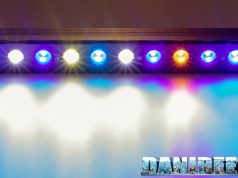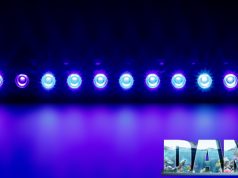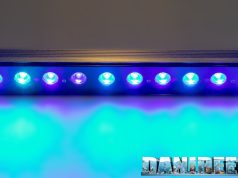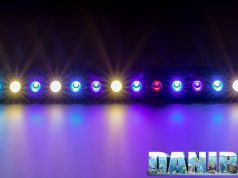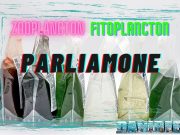Our new working method DaniReef LAB for PAR measurements
Backstory: During the long nights spent on our forum (here) we always wondered how could we compare PAR from different ceiling lights. Even though we had the perfect device, the Quantum Meter MQ-510 di Apogee, we always referred only to the value measured at the centre at 20 cm of distance, more or less.
The Quantum Meter MQ-510 measures the PAR, expressed in PFFD that is photosynthetic photon flux density in μmol m-2 s-1. This device is calibrated to work underwater, so if it’s in air the measured value has to be divided by 1,32 that’s the dive factor. We have to do the conversion. The values you’re going to see are correct.

We decided to make a square base of 70×70 cm, we set 17 fiducial points where we placed the sensor Quantum Meter MQ-510 and we also made 3 lifts of 20, 40 and 60 cm for the ceiling light, in order to have the same distance from the sensor. This will allow us to create the curves which can be compared to other ceiling lights’s, all tested at the same distances. Notice that this distance is measured between the base of the sensor and the ceiling light. In reality it should be decreased of 3,5 cm that is the height of the measurement cylinder and increased by 0,5 cm that’s the dimension of the spacers that lift the ceiling light.
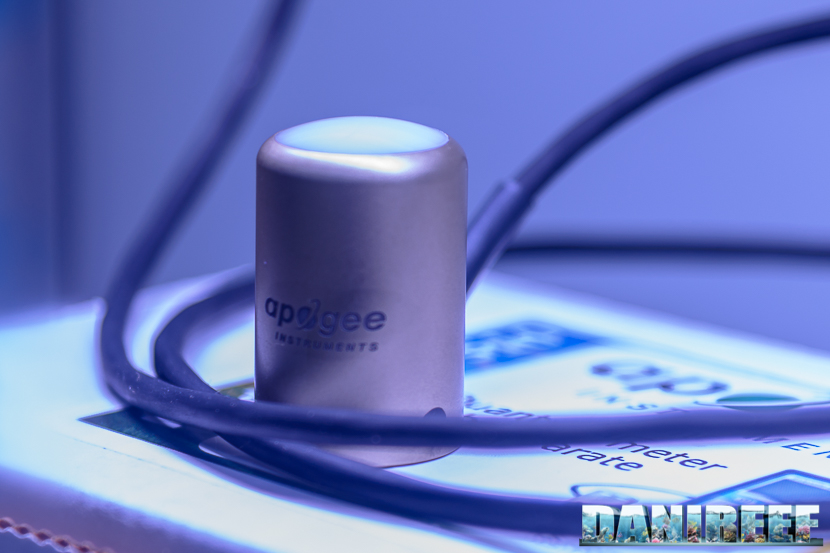
In total the three measurements are made from 17, 37 and 57 cm of distance. Because they’ve been done in air they will be corrected.
PAR measurement from 17 cm of distance
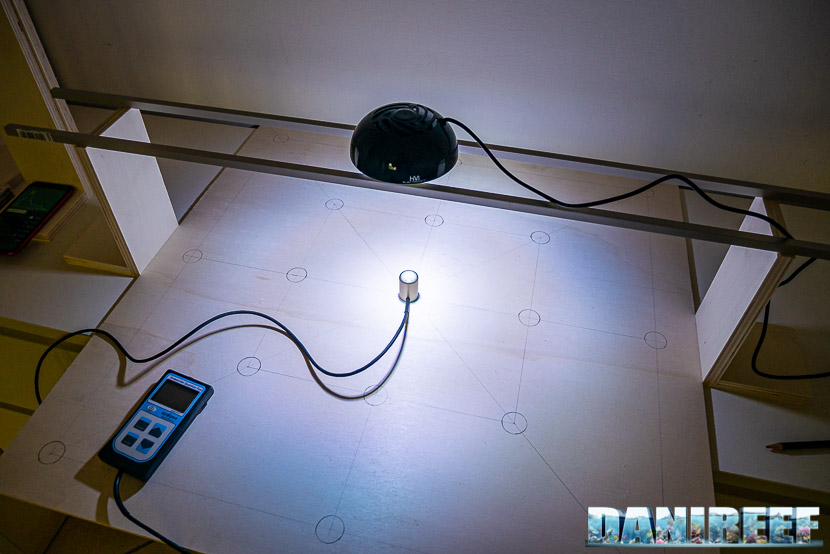
This is the condition of the test. Below there are the chart and the device, above the ceiling light placed on the aluminum bars.
Here the collected values:
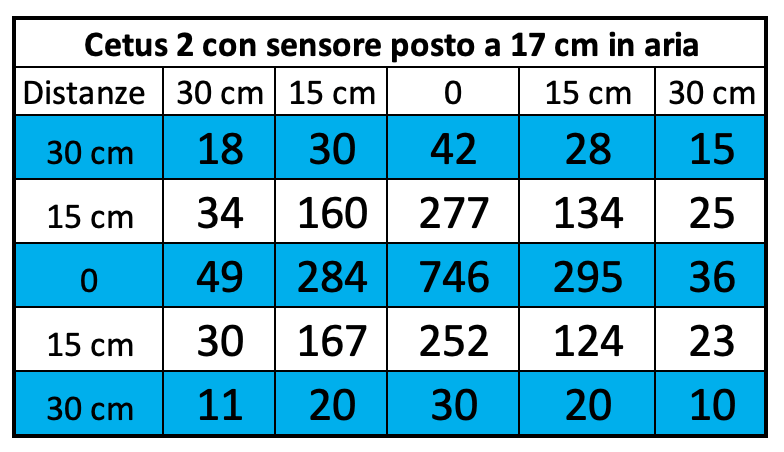
And that’s the corresponding chart. We’ve adopted a different scale because we have to consider that this ceiling light has a single cluster and it’s for very different aquariums compared to other ceiling lights. With homologue ceiling lights we will use the same evaluation scale.
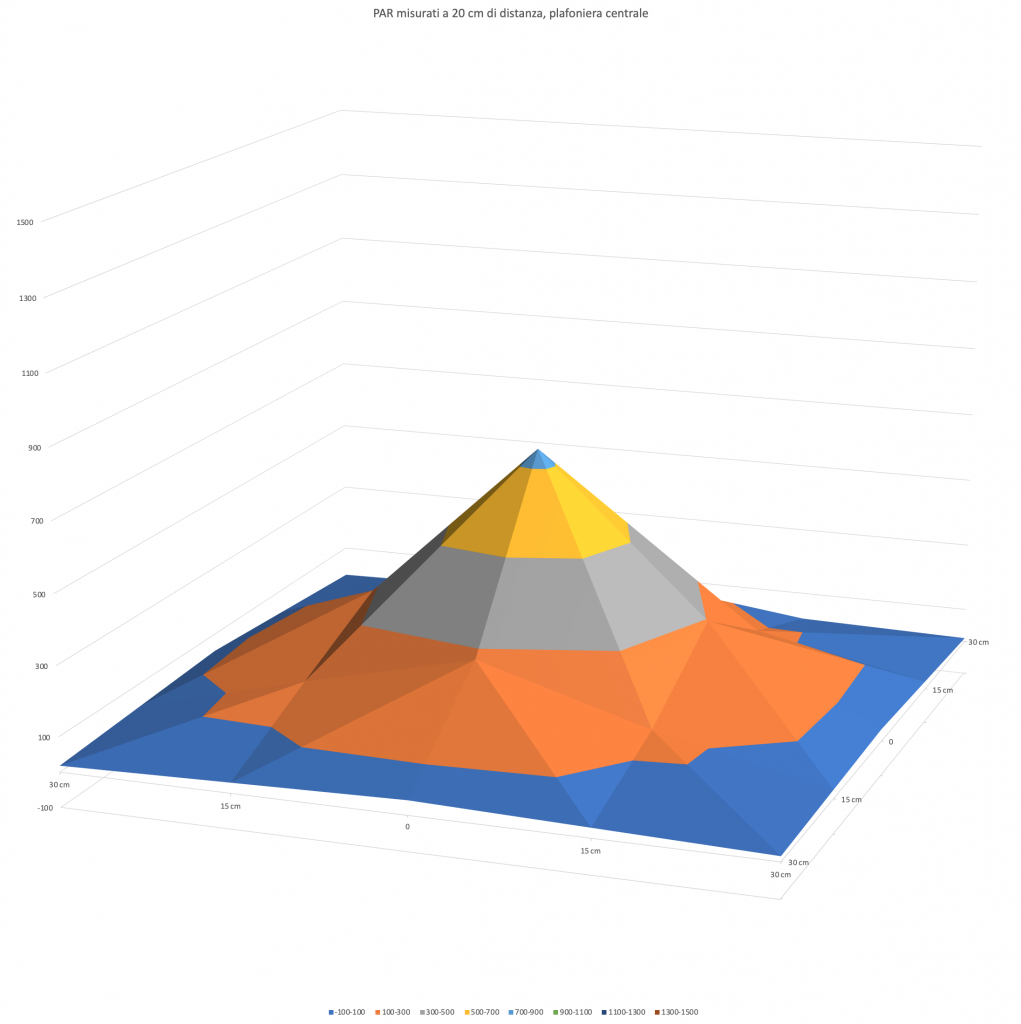
The first measurement always has the shortest distance between sensor and ceiling light. But for the features of this one we can notice that the distribution is already well equilibrated, also considering that we have a base of 60×60 which is a definitely a lot for such a small ceiling light. Anyway, it’s obvious that the PAR quickly decrease on all the sides.
PAR measurement from 37 cm of distance

This is the condition of the test. Below there are the chart and the device, above the ceiling light placed on the aluminum bars.
Here the collected values:
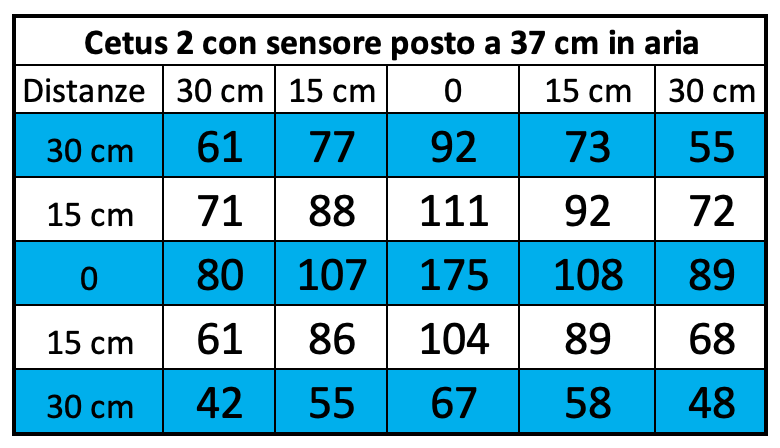
And that’s the corresponding chart.
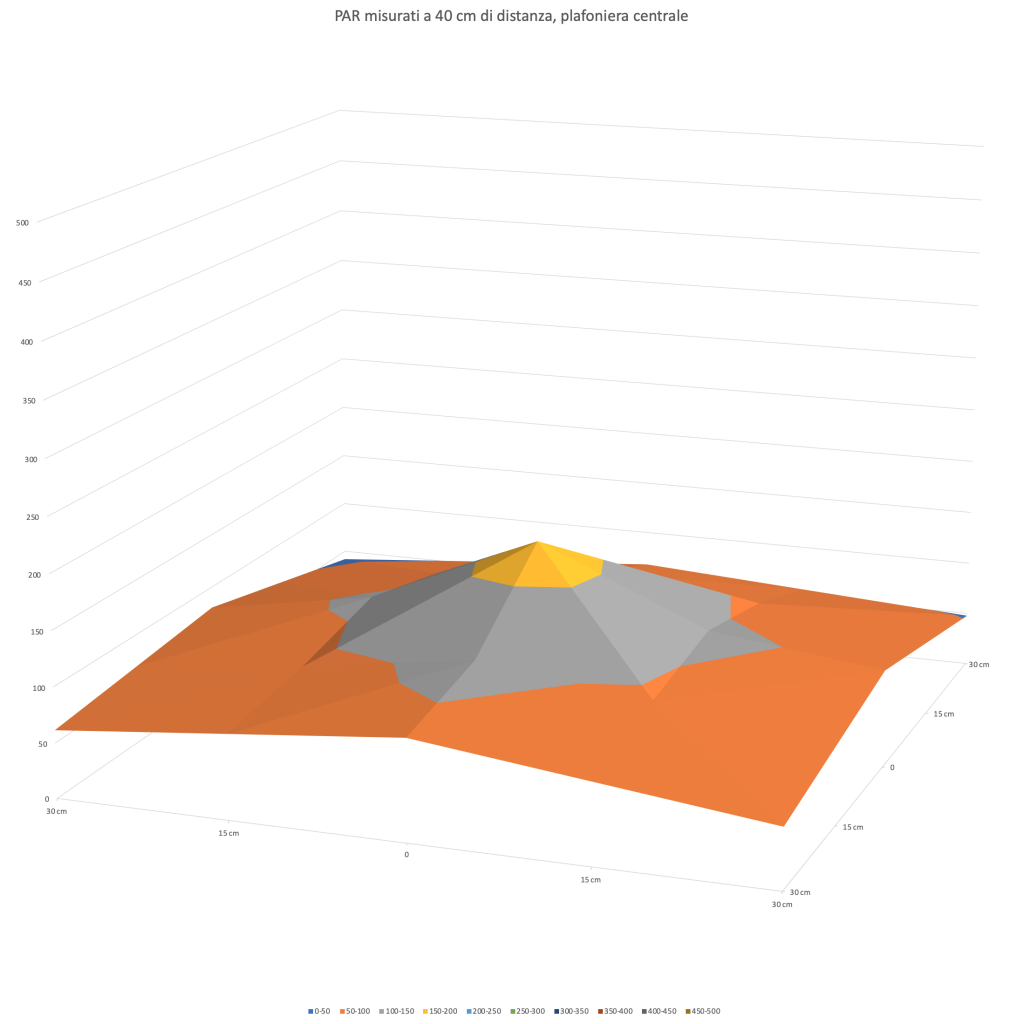
With a bigger space between ceiling lights and sensor, it decreases the difference between PAR in the middle and on the sides. The light spreads, but the central value decreases from 746 to 175 μmol m-2 s-1.
PAR measurement from 57 cm of distance
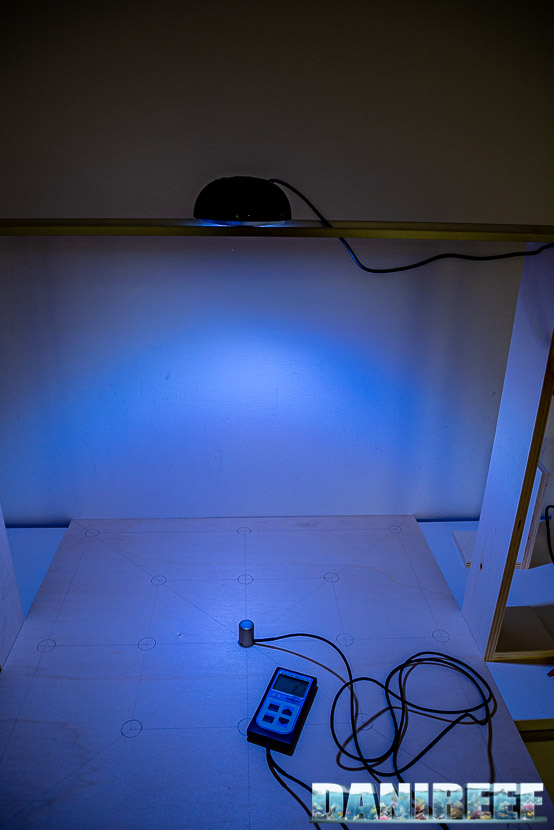
This is the condition of the test. Below there’s the chart, from this distance the device it is very visible, and the ceiling light placed on the aluminum bars. Even visually the illuminated area is a lot wider, so the specific power per cm decreases.
Here the collected values:
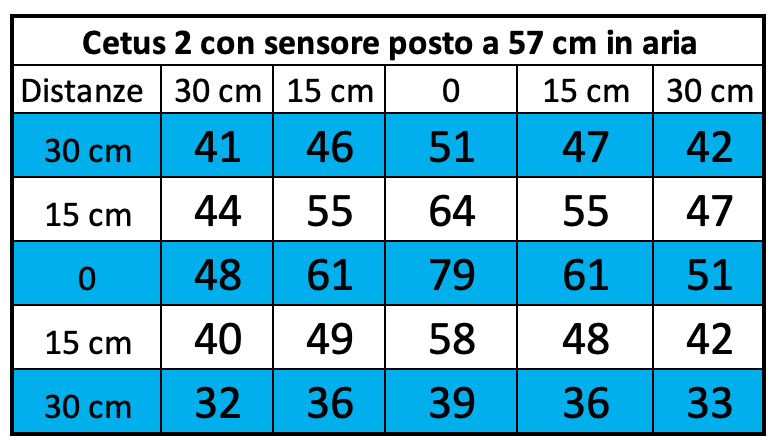
And that’s the corresponding chart.
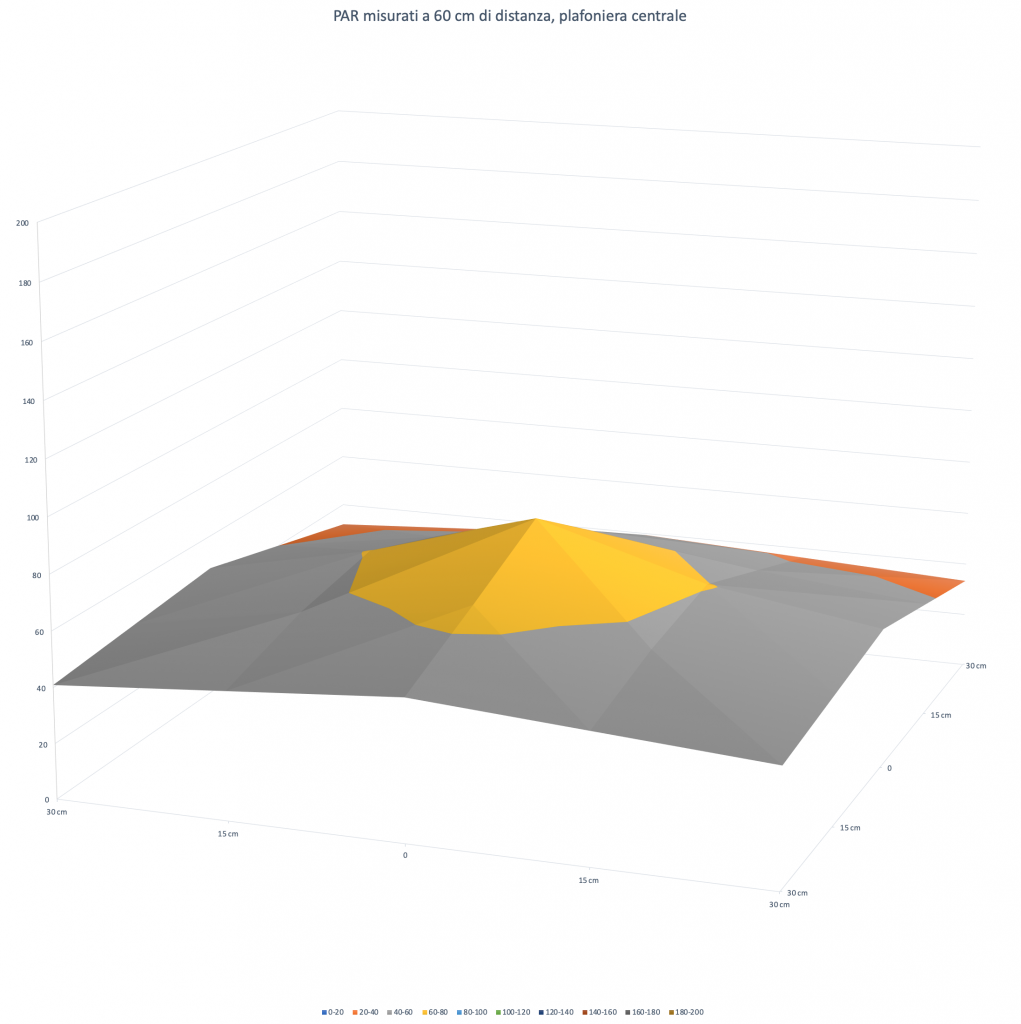
Increasing even more the space between ceiling light and sensor, it decreases even more the difference between PAR in the middle and on the sides. We have more uniformity, as expected, but the final power decreases a lot. The light spreads, while the central value decreases from 746 to 175 to 79 μmol m-2 s-1.
It sticks out that the coverage is uniform.
The PAR in the middle in the different configurations
Let’s continue with our technical measurements. We can see how, in a chart, the PAR collected in the middle decrease in the three different distances of our tests.
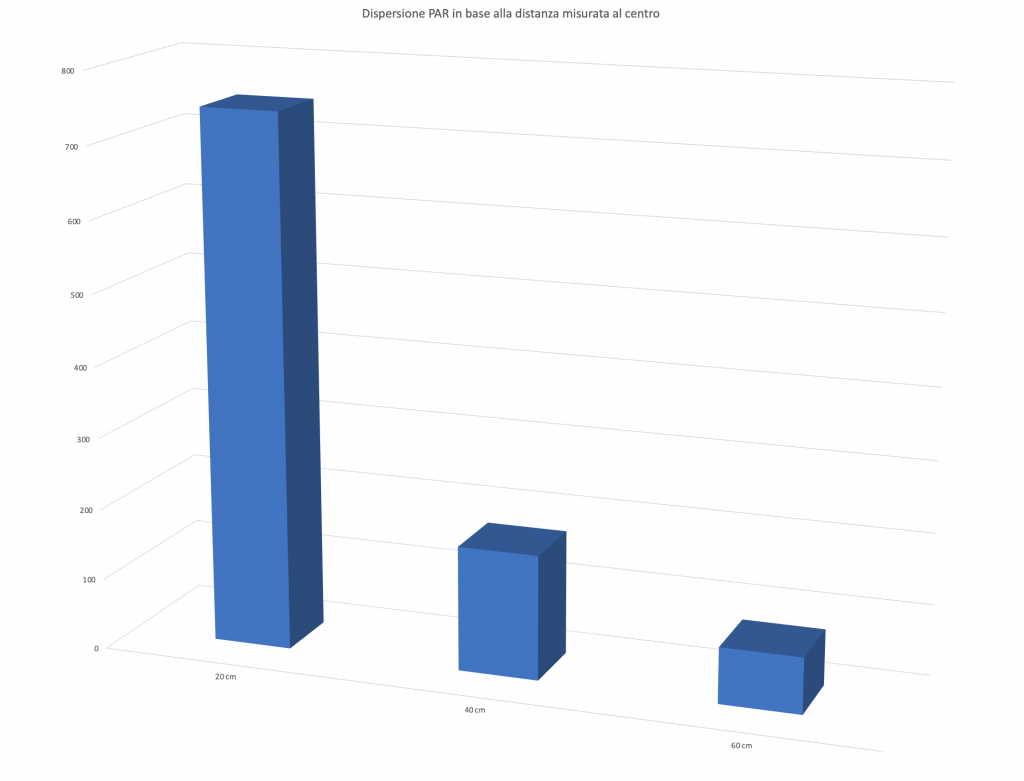
Energy variation of the Cetus 2 depending on the distances
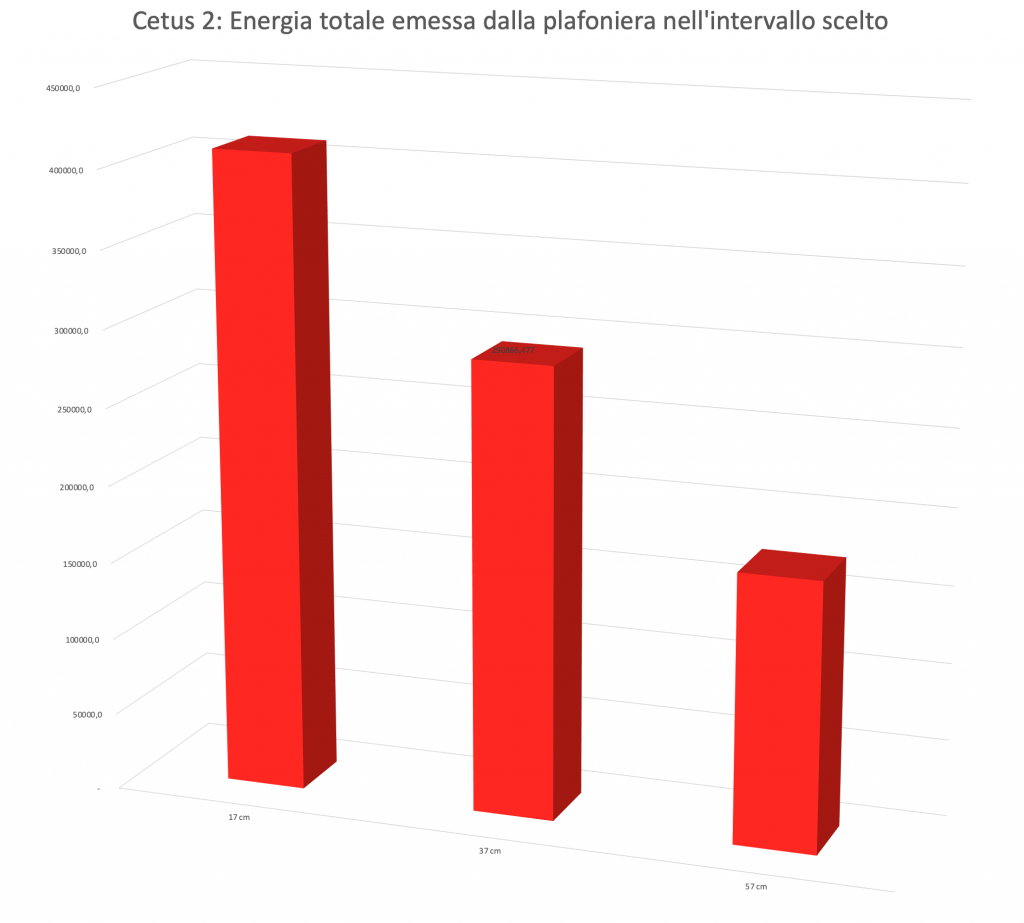
This is the most significant and most comparable data: the energy variation. We calculated the volumes of the three surfaces previously seen. It’s obvious that moving away from the ceiling light the PAR decrease, also because the light illuminates a wider space. In this way you can consider all the light energy contained in the 60×60 cm area subtended by the ceiling light. And the three values 409.993, 290.886 and 173.651 assume a different connotation compared to the values in the middle. When the first ones decrease because of the increasing of the distances, the subtended area, that is the energy, decreases less, because the main part of the lighting is in the middle.
In fact, looking at the values of the three curves you can see that at the sides there’s more light at 37 cm than at 17 cm.
Values per channel in the middle in the three distances
We also measured the values per each channel, but only in the middle, in order to give you an idea of the contribution of the different channels on the PAR produced.
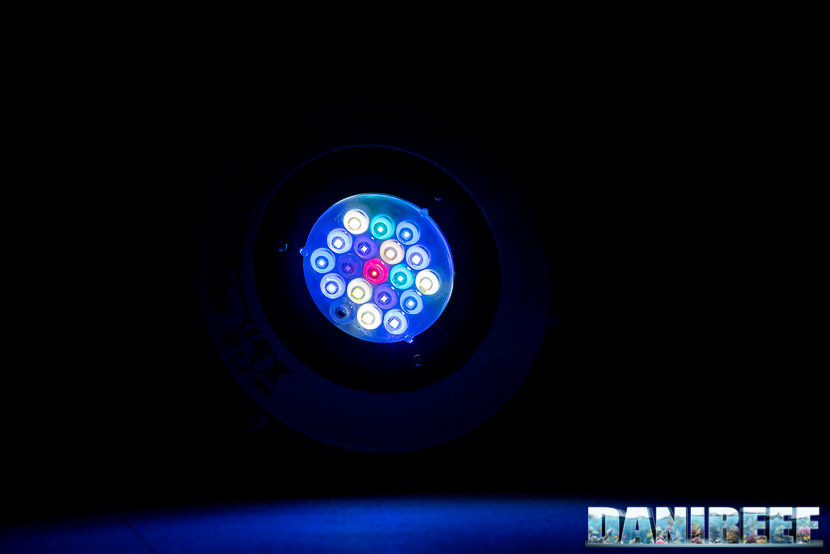
Let’s take a look at the measured values:
| Distance = 17 cm | Distance = 37 cm | Distance = 57 cm | |
| Channel 1 | 211 μmol m-2 s-1 | 52 μmol m-2 s-1 | 24 μmol m-2 s-1 |
| Channel 2 | 199 μmol m-2 s-1 | 48 μmol m-2 s-1 | 23 μmol m-2 s-1 |
| Channel 3 | 41 μmol m-2 s-1 | 30 μmol m-2 s-1 | 13 μmol m-2 s-1 |
| Channel 4 | 33 μmol m-2 s-1 | 23 μmol m-2 s-1 | 10 μmol m-2 s-1 |
| Channel 5 | 18 μmol m-2 s-1 | 15 μmol m-2 s-1 | 6 μmol m-2 s-1 |
| Channel 6 | 40 μmol m-2 s-1 | 30 μmol m-2 s-1 | 14 μmol m-2 s-1 |
The first channels, white and blue, are the responsible of all the emission of PAR. 410 PAR against 130 from the other 6 channels, at 17 cm.
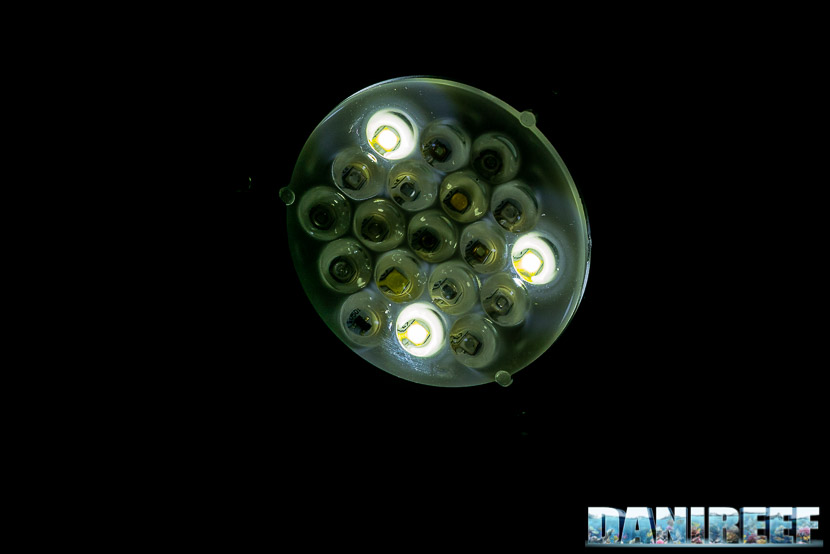
Canale 1 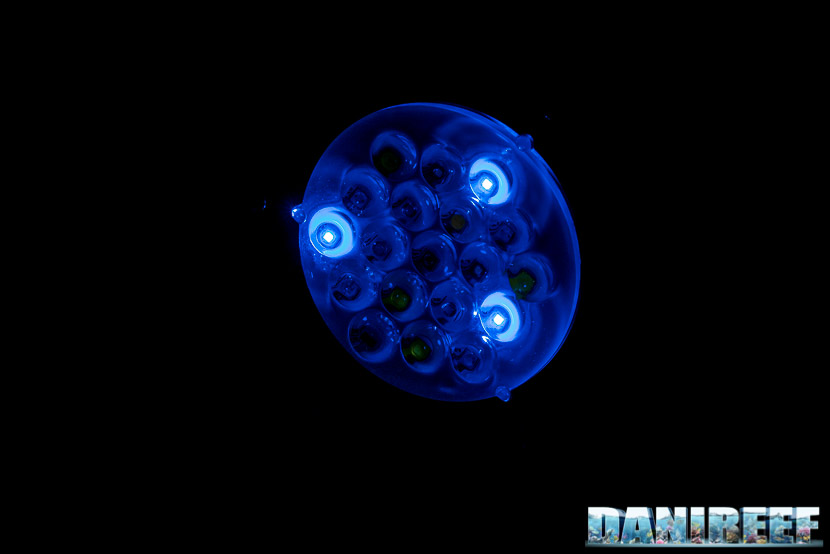
Canale 2 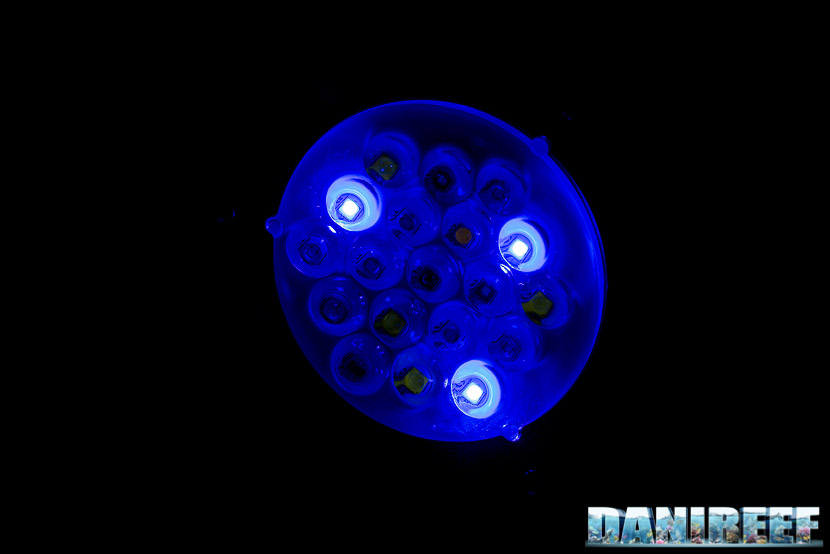
Canale 3 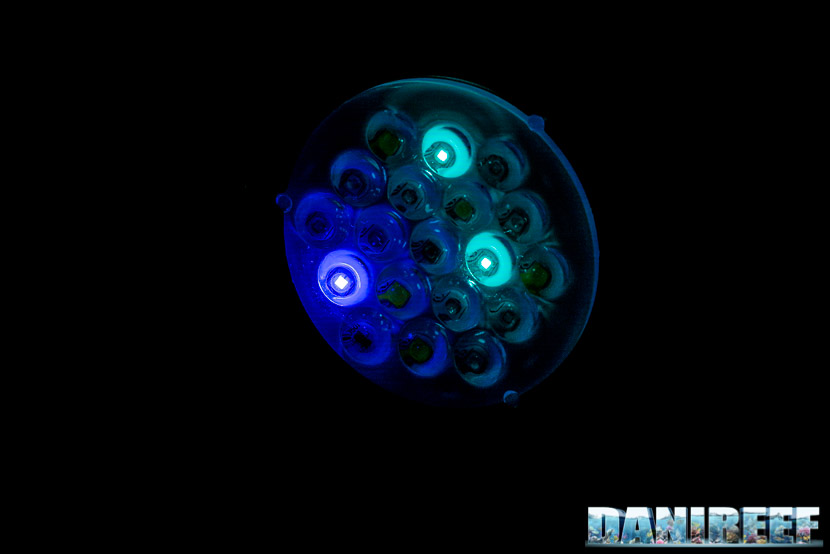
Canale 4 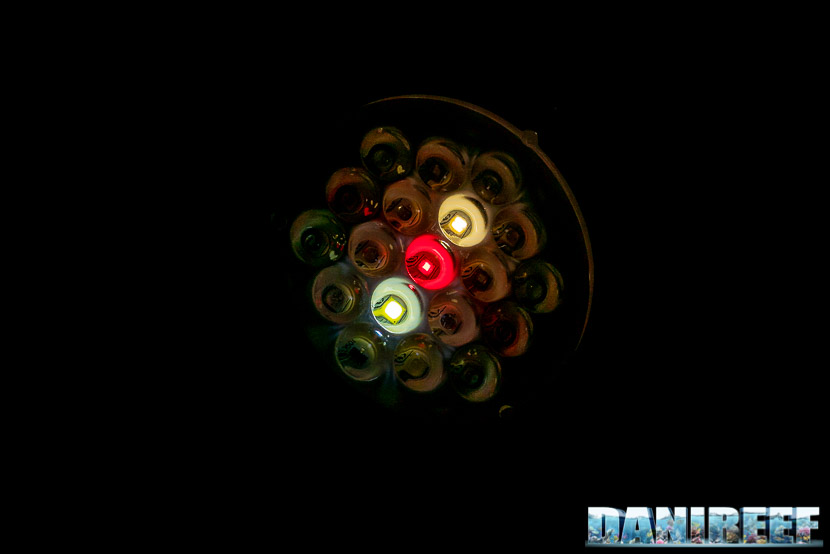
Canale 5 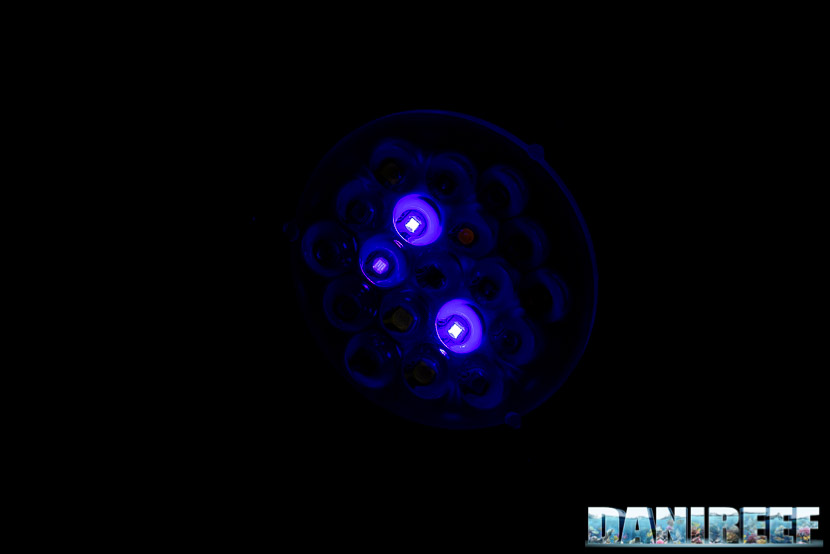
Canale 6
Let’s continue on page three with the costs, the comparison with other ceiling lights and our final opinion.




